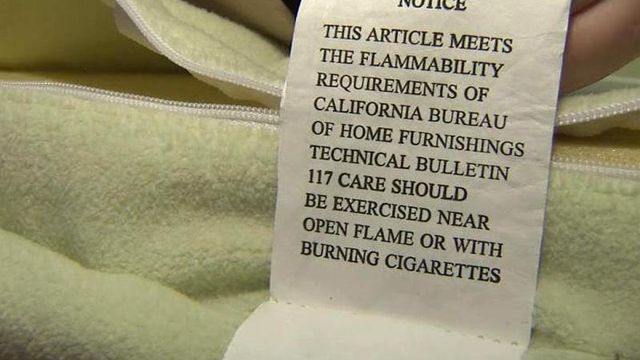Duke scientist finds toxic chemicals in baby products
A Duke University scientist is raising concern about her discovery of flame retardants in countless baby products. The chemicals, which are added to products to slow the spread of fire, are potentially toxic, says Dr. Heather Stapleton.
Posted — UpdatedUsed in children's pajamas in the 1970s, they were eventually banned for safety concerns, but Stapleton found similar chemicals still used in many other children's products, such as car seats, changing pads and portable cribs.
"We've been investigating the levels of flame retardant in infant products," Stapleton said. "We tested 100 products recently and found 80 percent of them had a known flame retardant with a known health effect associated with it."
Stapleton says that, in animal lab tests, the chemicals impacted brain development, thyroid regulation and were even linked to cancer.
Manufacturers started adding the chemicals to furniture in the 1970s after California adopted new standards following concern about people falling asleep with cigarettes. Those standards were applied to many products, including those that babies are near, in or on every day.
"A lot of these products contain polyurethane foam," said Stapleton.
That foam is what's often treated with the flame retardant. Babies can be exposed two ways – by touching or breathing.
In her lab, Stapleton is constantly running tests to see where the chemicals are found, how much and "whether there are health effects associated with exposure to these chemicals."
"Because right now, we just don't know," she said.
The chemical manufacturers told CBS News that flame retardants provide important fire safety benefits and that Stapleton's study does not show harm to infants because it "does not address exposure or risk."
Stapleton compares the issue to a banned substance we're all familiar with: lead paint.
"Flame retardants are repeating that paradigm, or that model where there's exposure coming from indoor dust," she said.
As a mom, Stapleton started looking for products made without polyurethane foam and without the label that says the product complies with California's flame retardant regulation.
She says her research team is now testing products in the homes of families with young children, testing everything from baby products to couches to television remotes.
They're also testing the chemical levels on their hands and in house dust. 5 On Your Side will keep you posted on what they find.
• Credits
Copyright 2024 by Capitol Broadcasting Company. All rights reserved. This material may not be published, broadcast, rewritten or redistributed.





